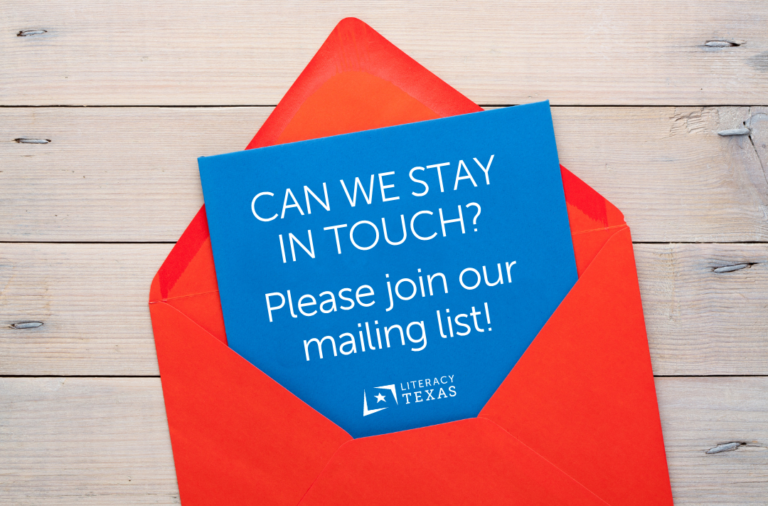“The point of communication is to be understood.”
That’s – well, it’s kinda obvious, right? What else would communication be about?!
And yet how often do we explicitly learn to craft our messages for better understanding – and even more crucially, to vary the format and even the content when necessary?

All of us appreciate not being confused. Knowing that, some of the first focused work on making communications clearer came from the legal and health fields. There’s now plainlanguage.gov, the Clear Communication Index from the CDC, and even a plain language contracts project right here in Texas. And we all appreciate their work, every time we have to read a medical or legal document or form and we actually know what it said when we get to the end.
But those of us who work in adult and family literacy know that’s not always enough.
What about when the audience is primarily people who don’t speak English as a native language? Or primarily people who find reading challenging? And what about when the audience is people who are in both groups at the same time?
One of the best gifts we can give the adult learners in our classes is the gift of simplicity. And plain language that’s adequate for native English speakers, and those who read fluently, won’t always cut it for people with greater barriers.
So how can you make plain language – even plainer? What resources are out there to help you be more conscious of both your spoken and written communication – and to truly consider adults with low literacy?
Thankfully, there are many more resources than there used to be.
The National Institutes of Health (NIH) used to be one of the few places you could find ANY plain language material – and their resources are still very good! There’s also Communicate Health, including their wonderful plain language newsletter, We Heart Health Literacy.
And in recent years, the clear communication banner has been taken up by more and more literacy folks. Two of our favorites:
- Literacy Works and their Clear Language Lab
- Wisconsin Literacy and their Plain Language Training
We also invite you to bookmark the page on Plain Language here on this website, and return to it as you have need.
But ultimately? The single best thing you can bring to your plain language journey – whether you’re just starting or you’ve been on this road for a while – is intentionality.
When we see our conscious use of plainer language as a way to break down barriers, to welcome newcomers, to put people at their ease, to make sure people have information that they need – then we’re already halfway there.
Get Texas literacy updates
Make sure you’re on our mailing list so you don’t miss any news:
- Conference updates
- Regional symposia
- Online training
- Advocacy
- …more!



